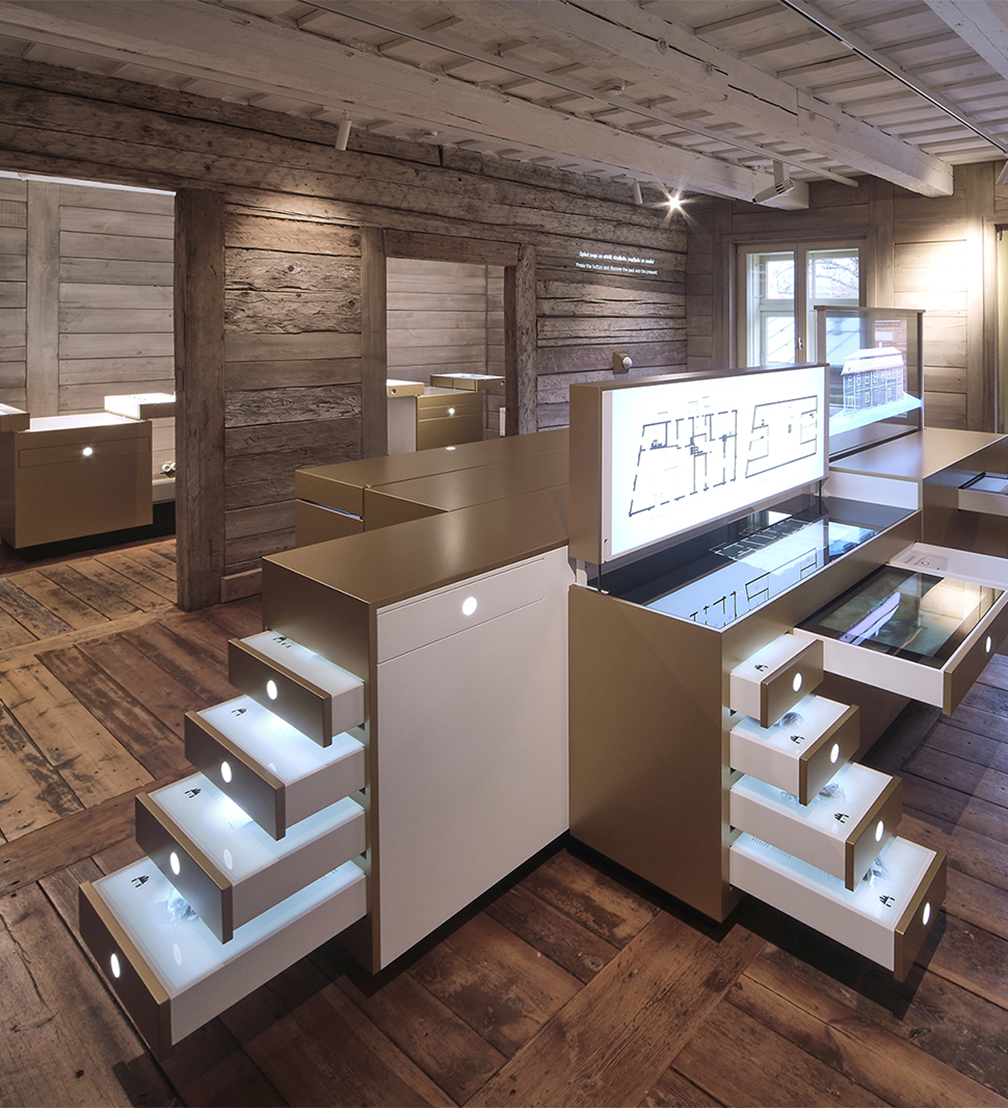
In the Jelgava Old Town House, one of the oldest buildings in Jelgava, a new permanent exhibition House Tells, created by the architecture office DJA, has been opened. In the exposition, visitors can get to know the history of the building and learn more about wooden architecture by exploring interactive «story chests» and experiencing the everyday life of the residents of the building throughout different times.
Jelgava Old Town House was built at the end of the 18th century, it is an architectural monument of national importance, and one of the oldest wooden residential houses in Jelgava that has survived to this day. Back in the day there were apartments, a shop, furniture carpentry, a bicycle and moped repair shop, a cobblers workshop, as well as a laundry collection point. In 2018, the reconstruction works of the building were started, during which the house was restored and combined with the neighbouring stone building, where the Zemgale Restoration Centre was established.
The exhibition House Tells has been opened at one of the historical apartments of the building. To show respect for the restored house, the exhibits were designed free–standing. Three different «story chests» are located in three rooms, each of which hides information about wooden architecture on different scales — the city, building, and details. Visitors can explore the contents of the chest by opening the various drawers and lids, as well as interacting with other elements. The more drawers the visitor opens, the more they learn about the given topic.
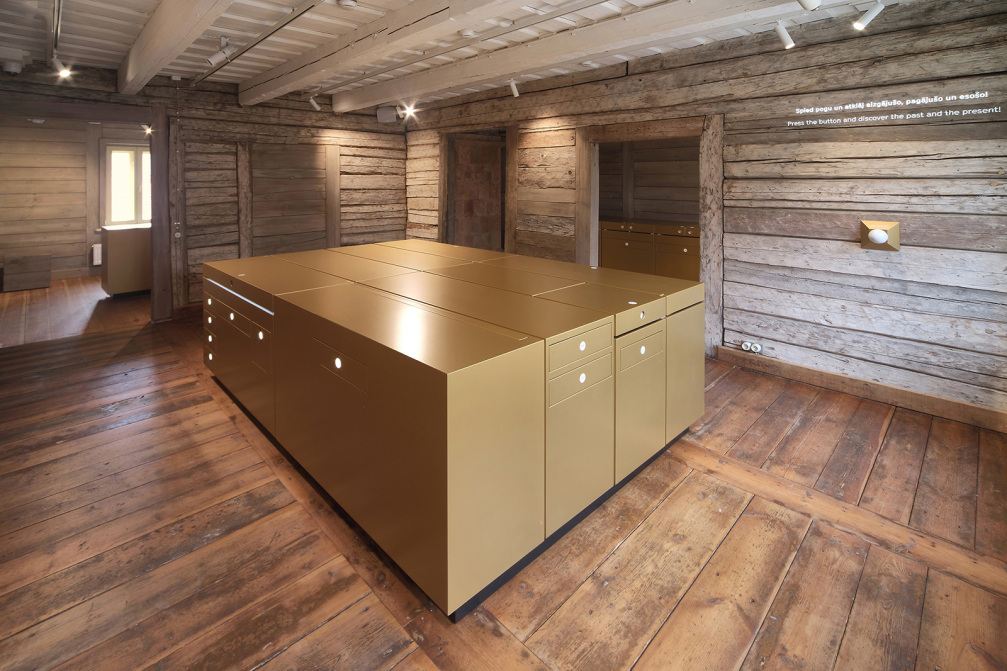
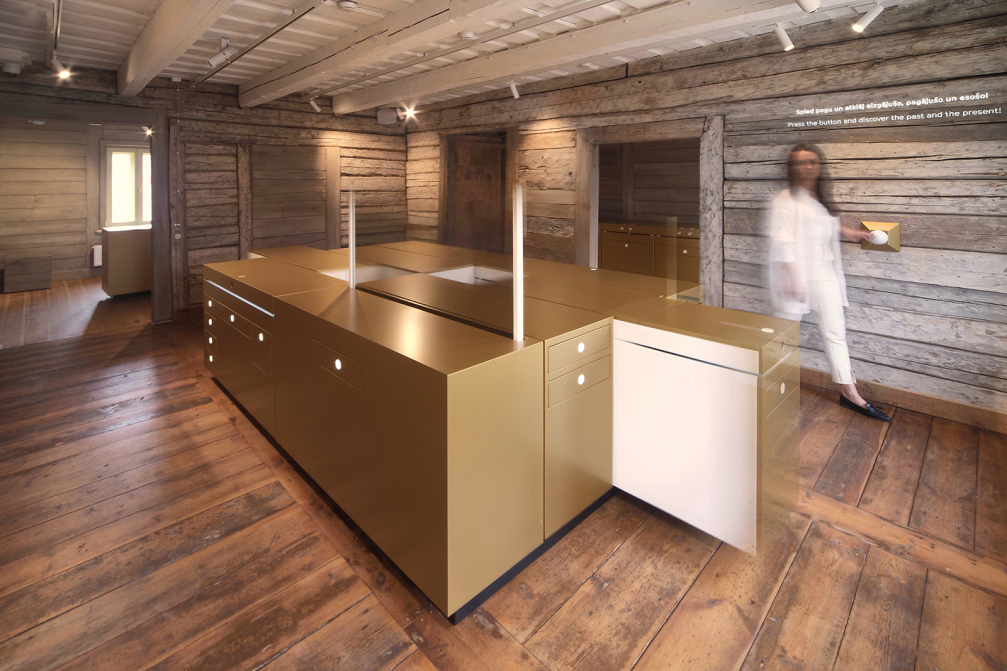
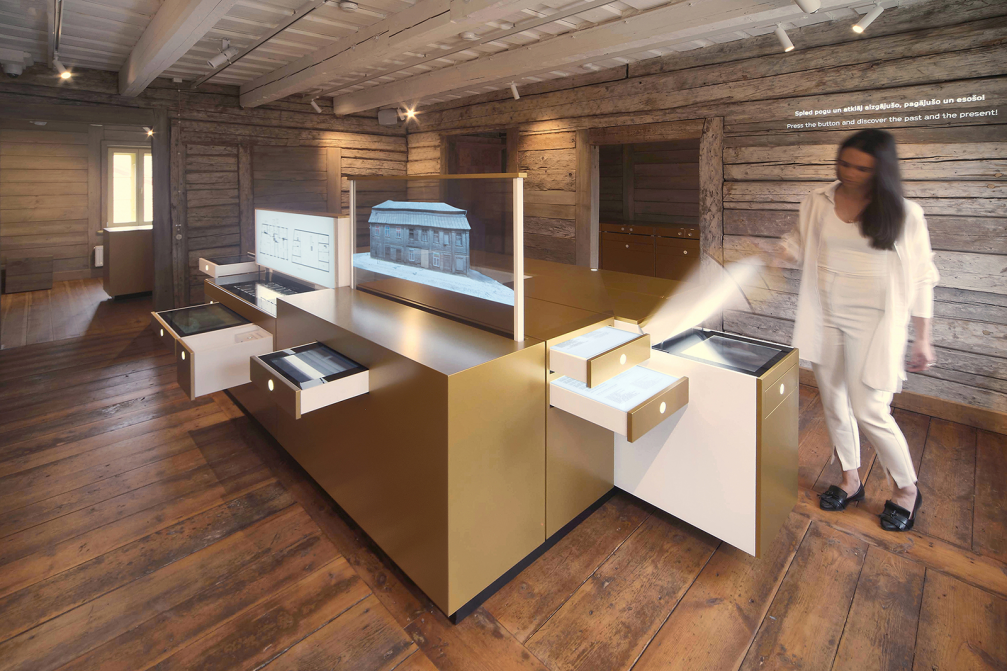
In the exposition, the Old Town House is embodied in the character of a woman who leads visitors through the house and tells about life in it in different times. The author of the exhibition, architect Didzis Jaunzems, points out that this technique makes the story of the Old Town house more personal and allows visitors to be presented with the technical information of the restoration in an engaging way. The audio story continues in other spaces of the house, providing information about the most important interior elements that are not included in the exposition.
Visitors can also explore information stands, for example, about the building’s oldest wall, which has turned from an external into an internal wall, the ancient basement of the building unearthed during the construction works, the various patterns of the brick floor, the structure of the reed ceiling, as well as the drawings on the plaster of the walls. The exhibition shows specially filmed scenes, depicting the apartment in different time periods, providing information about the historical parts of the building and allowing visitors to imagine how people once lived here. Artefacts found during the restoration process are also integrated into the exhibition.
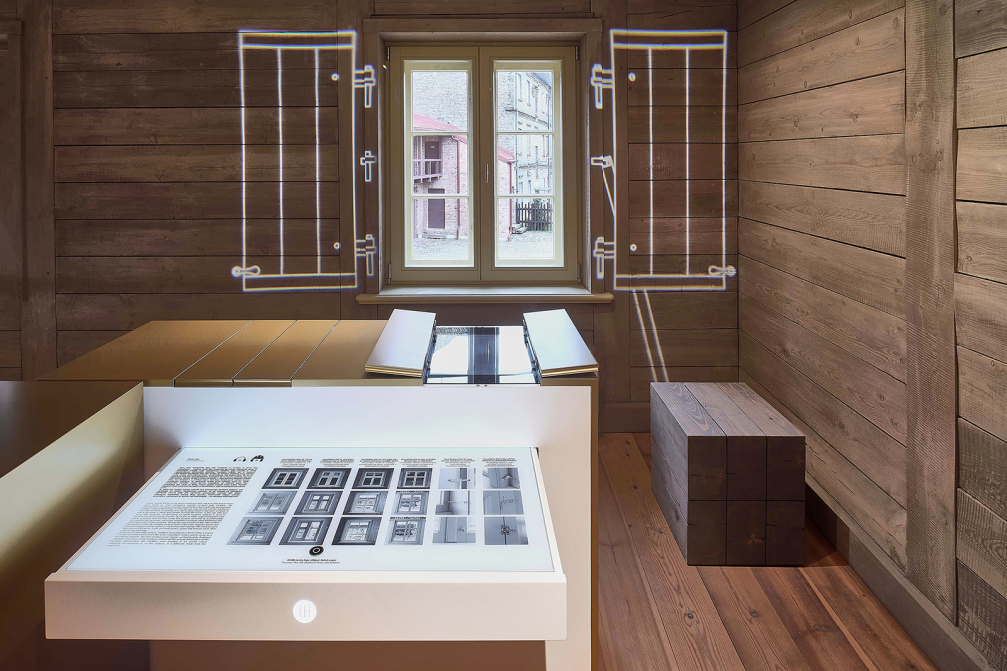
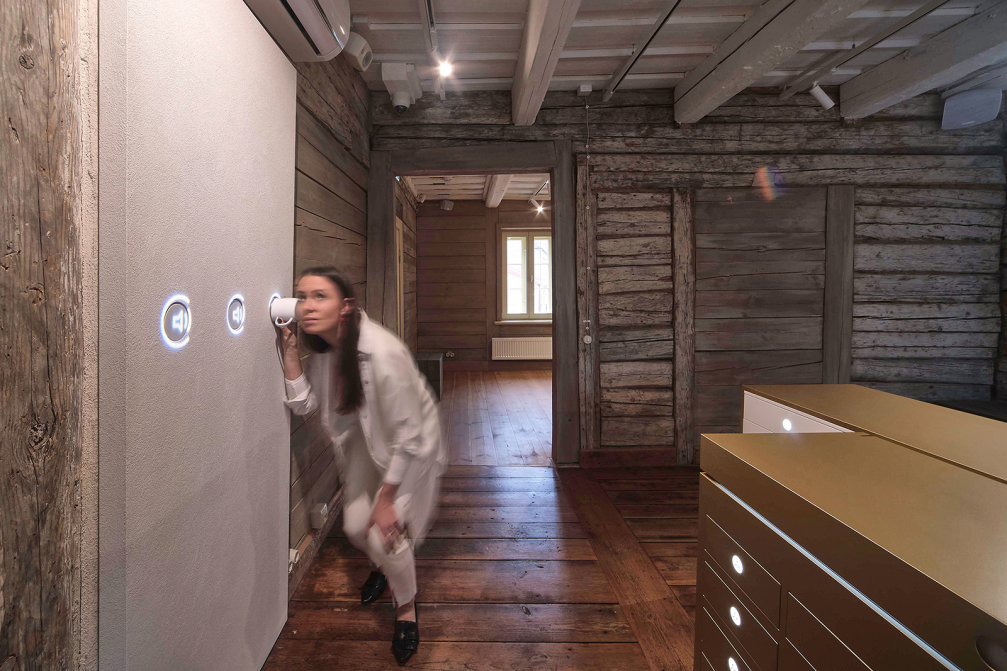
The sound design of the exhibition helps conjure up a domestic atmosphere. The audio installation depicts the noises that the people living here might have heard — the clinking of dishes in the kitchen, the singing of passers–by, the crying of a child, etc. You can even put a glass to one of the walls and listen to the neighbours’ conversations. Light projections are also used in the exposition. For example, when talking about Duke Jacob’s canal or rampart, a map of Jelgava is displayed on the exterior wall of the building, while images, which provide an insight into the historical development of doors are projected onto the boards of a covered doorway.
More information about the exhibition House Tells — on the DJA website. Concept and design by DJA. Technologies and management by Solavi, production and technical design by Yes We Can, multimedia by Putnu Studija, programming by Overly.
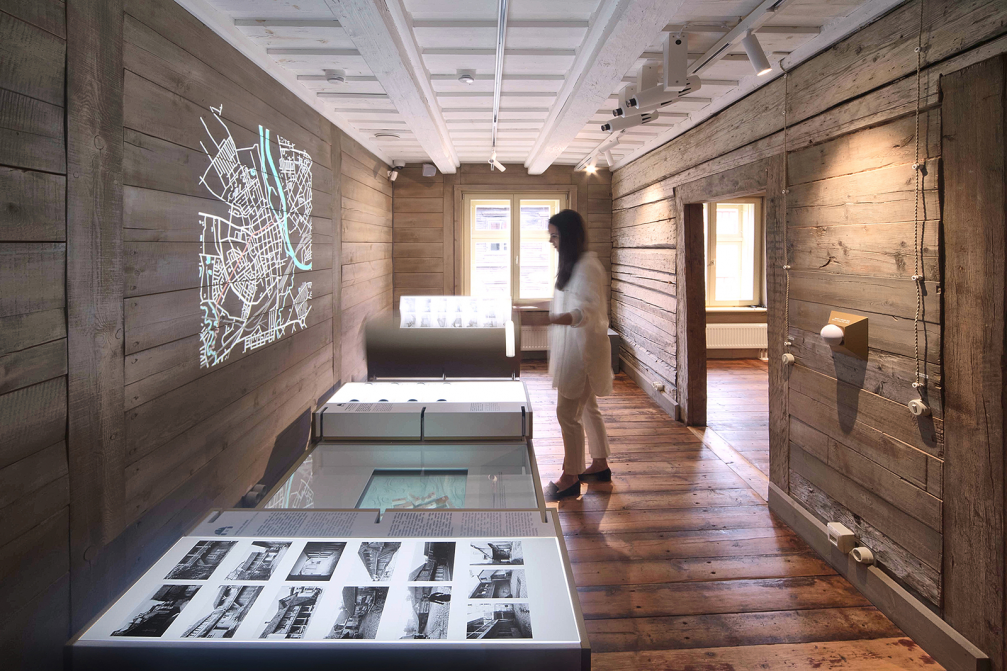
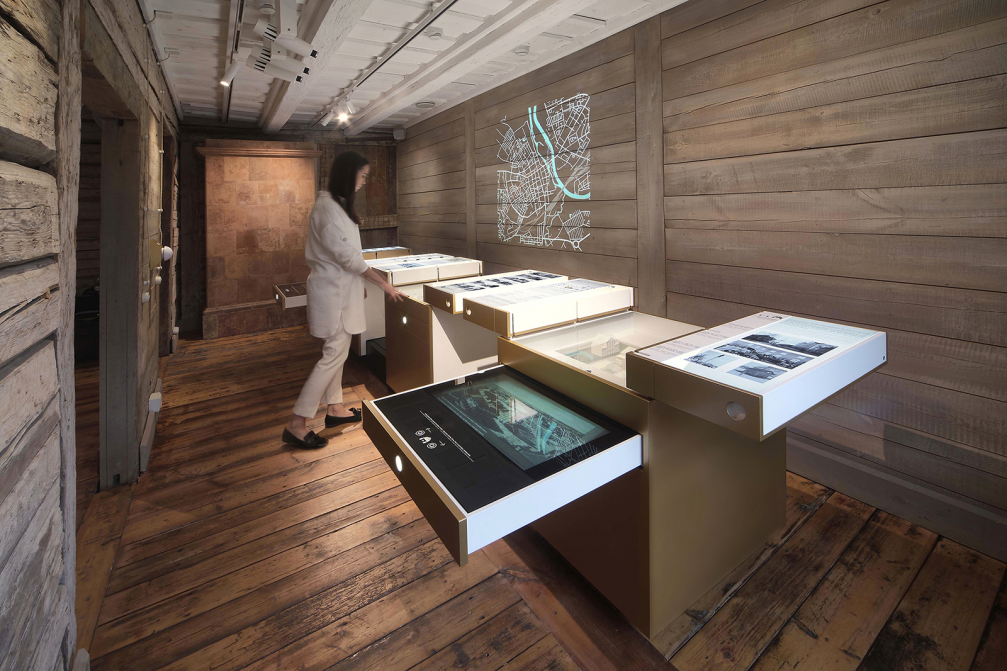
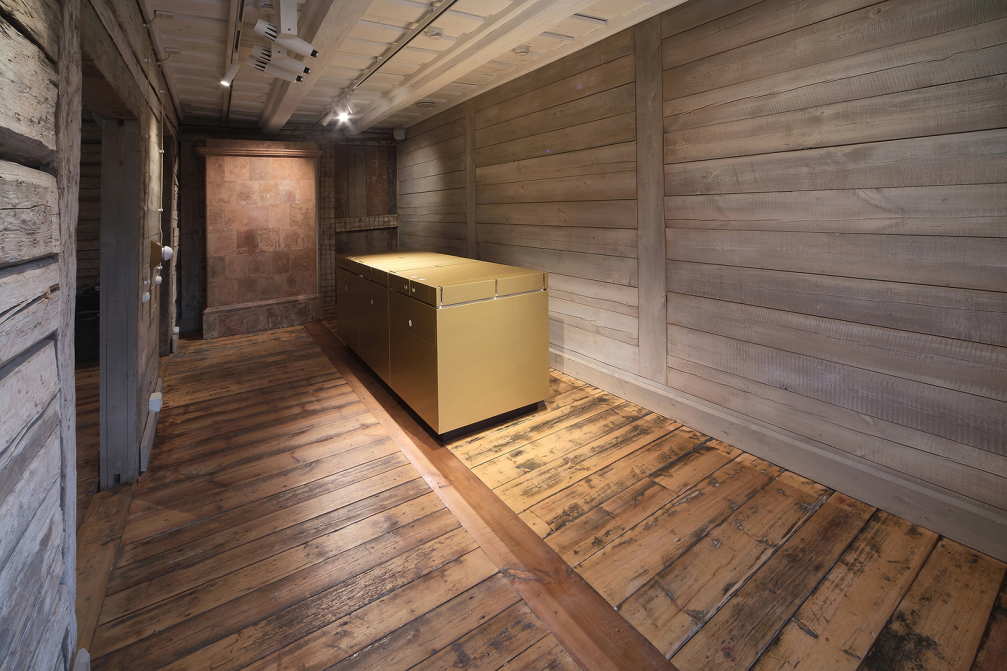
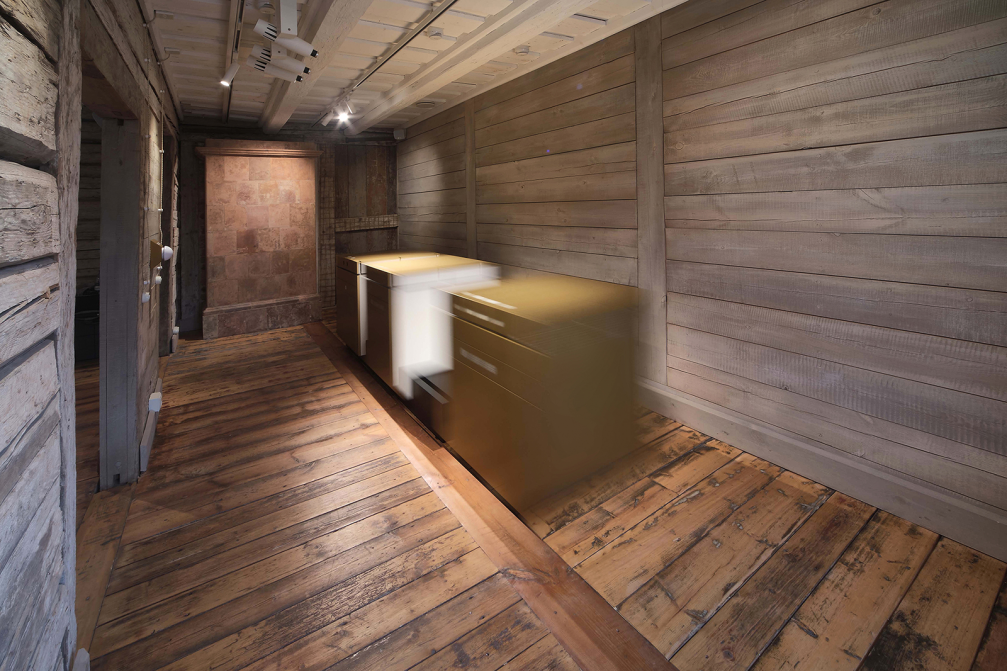
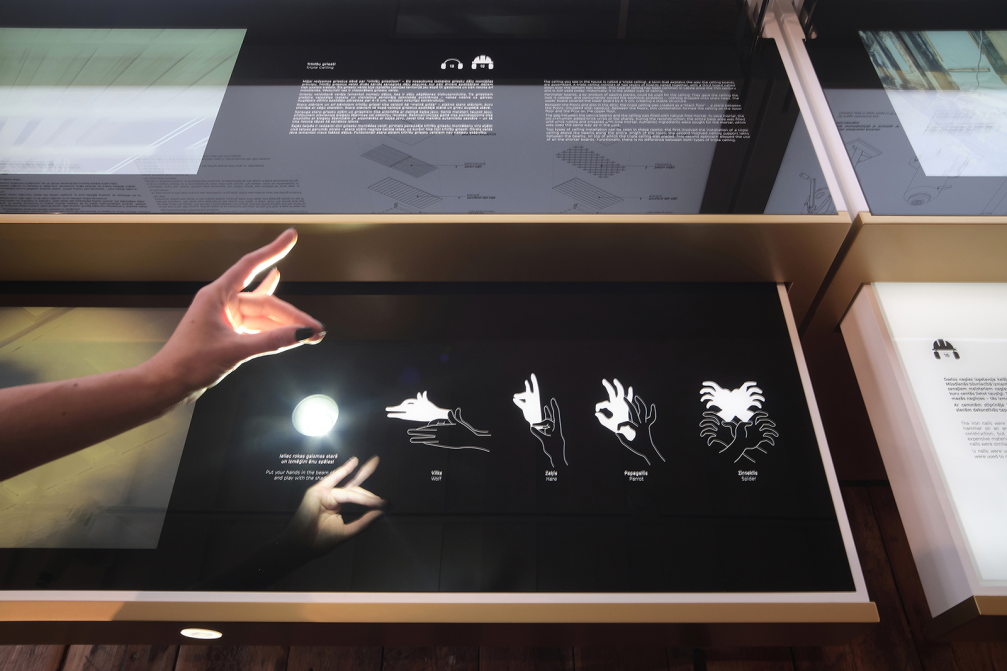
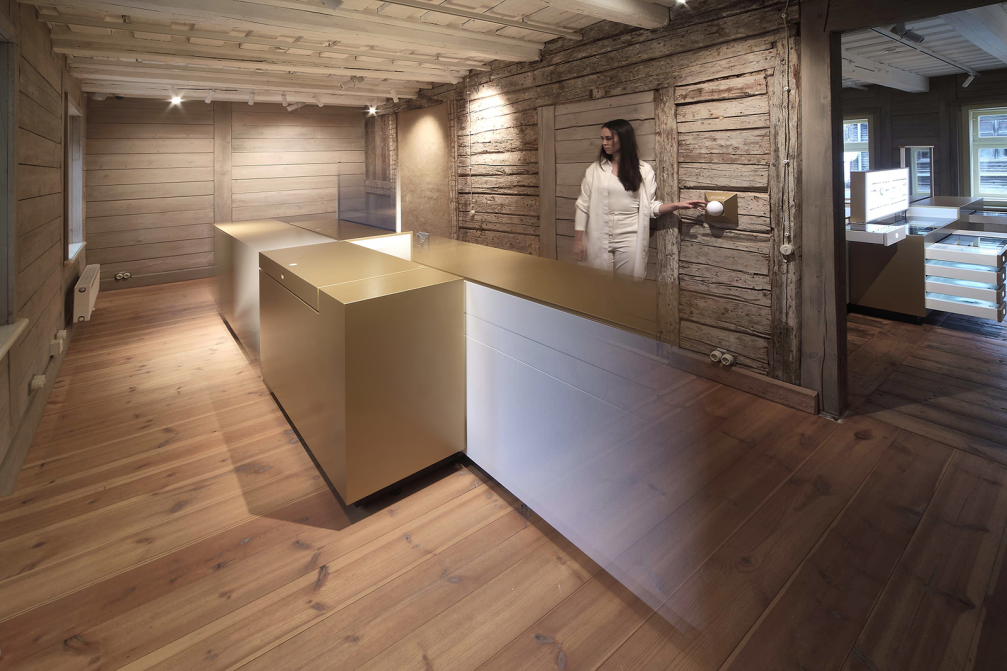
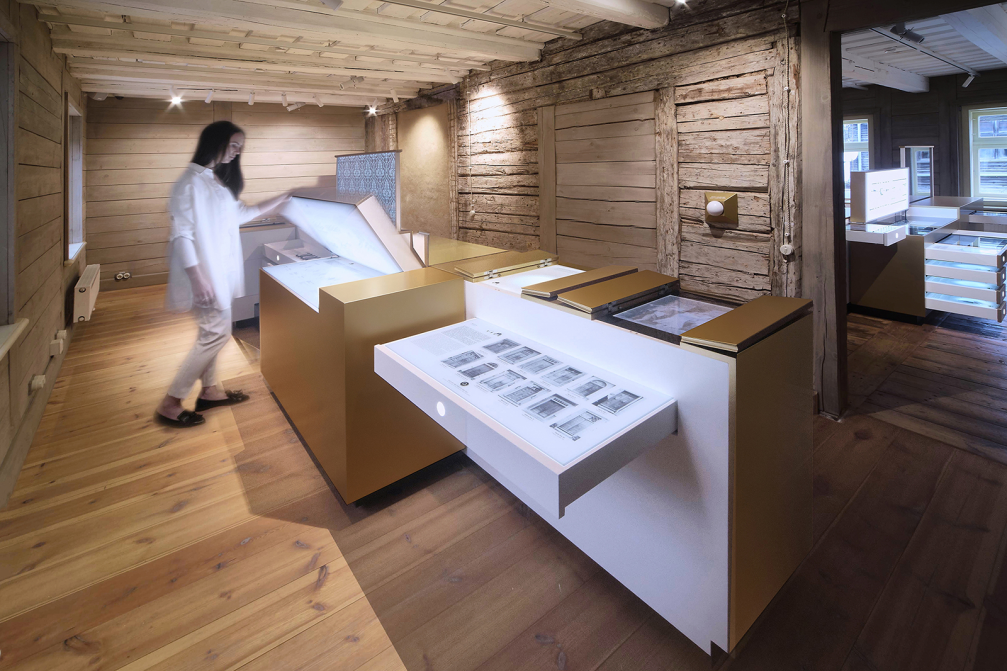
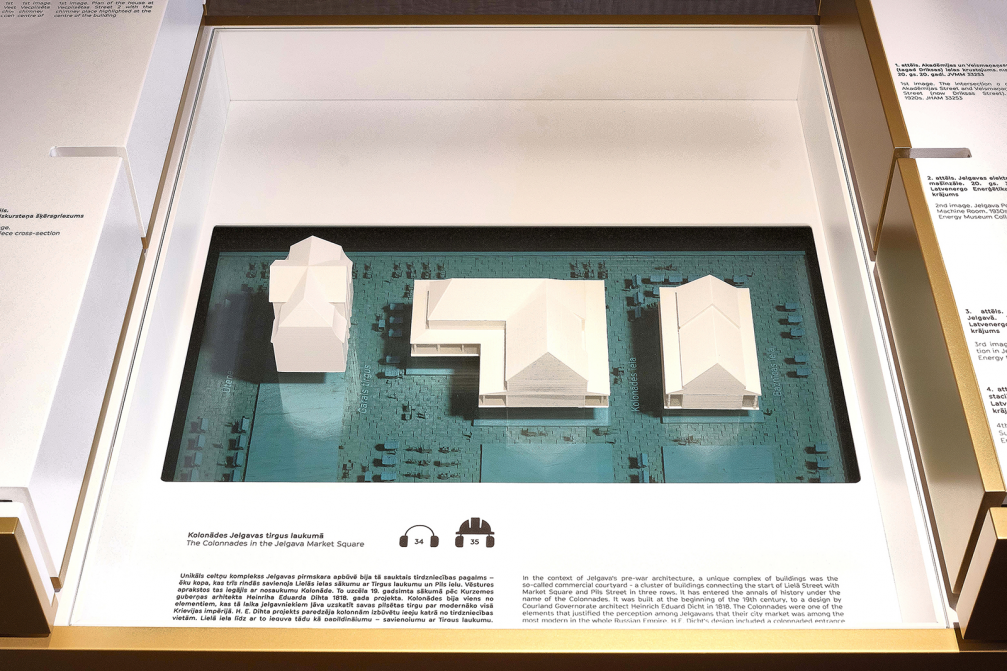
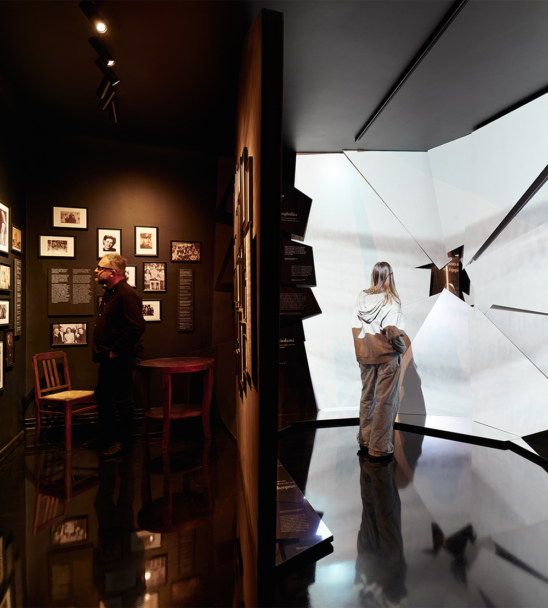
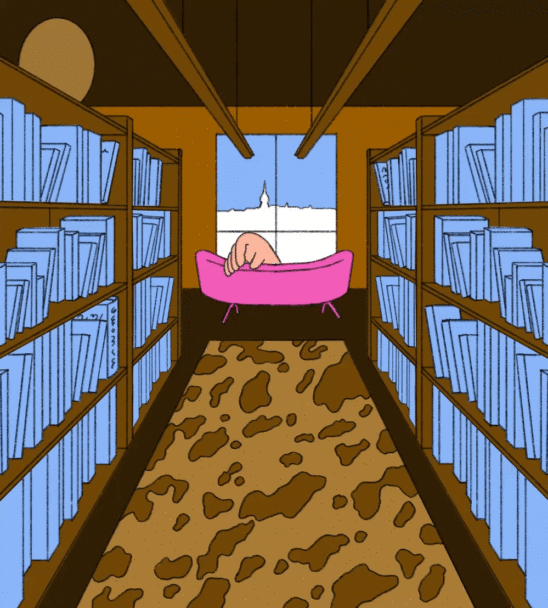
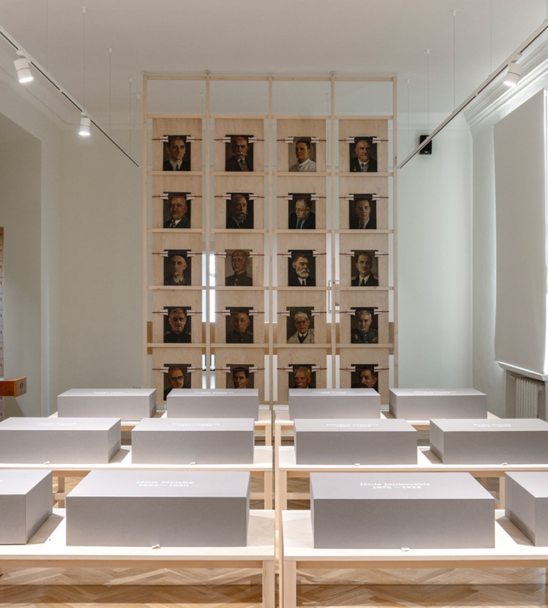
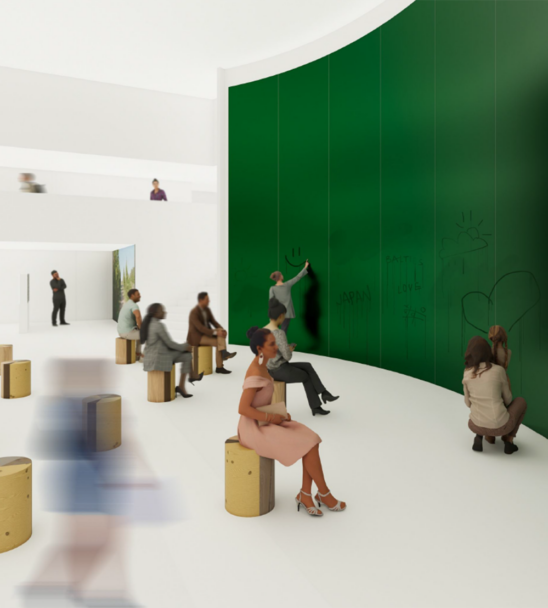
Viedokļi